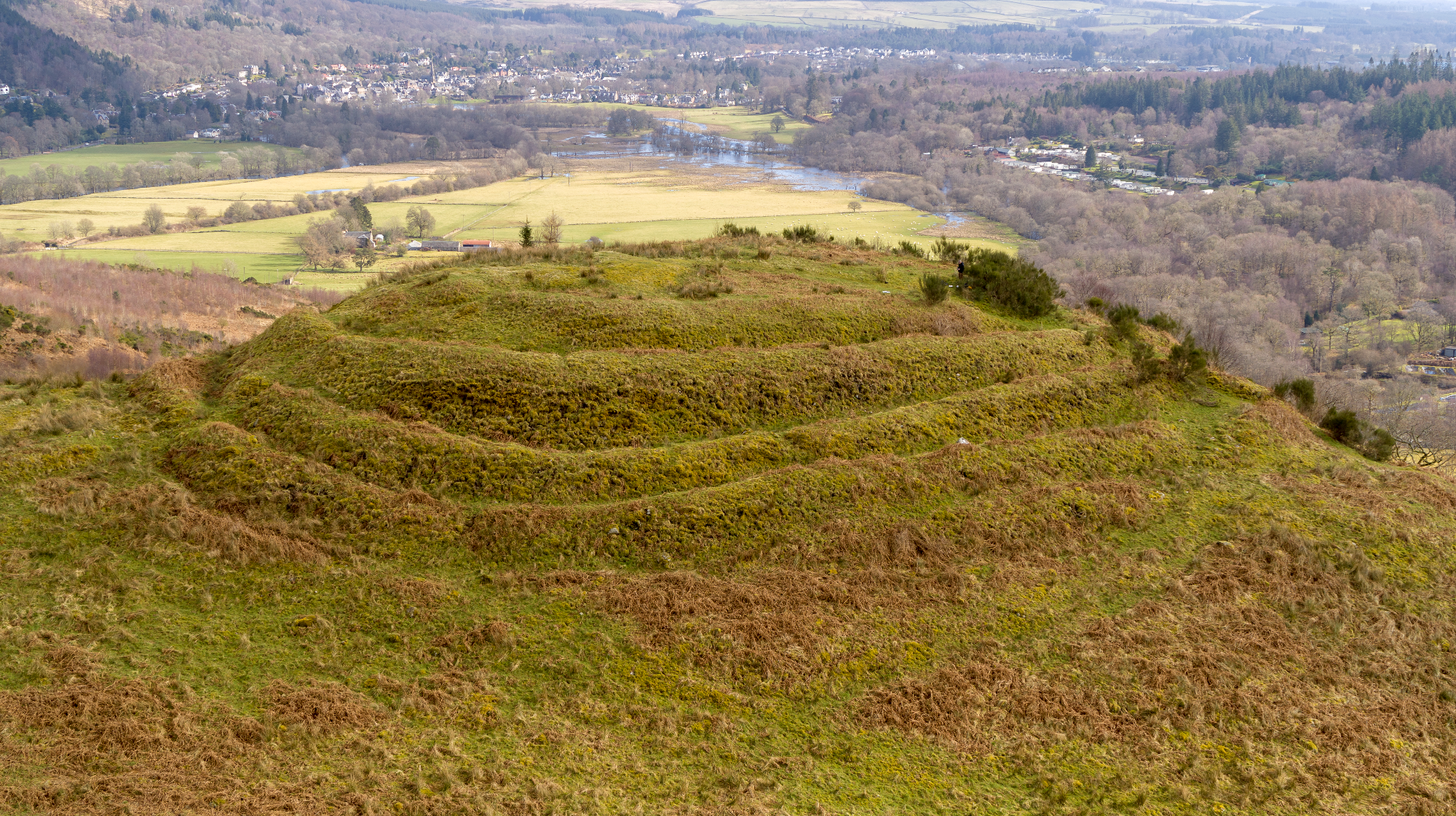
Dunmore Hillfort
Dunmore Hillfort occupies the summit of a steep-sided hill about 2.5km west of Callander; you can see it briefly from the A84 as you approach Kilmahog from the east. The defences are formed of four ramparts on the NW and SW sides; the eastern side of the hill drops away sharply, providing a natural boundary. A possible scarp or terrace at the base of the four upper ramparts perhaps represents a fifth rampart. The ramparts probably weren’t constructed all at once, suggesting multiple phases of occupation, perhaps spread out over centuries.
A second enclosure on the northern side of the hill, on a lower terrace, forms an annexe to the main hillfort.
In the centre of the hilltop is a feature identified as a well: a hollow approximately 2m in diameter, with water apparent at different times of the year. Adjacent to this is a modern cairn.
A whetstone, for sharpening metal blades, was found in the interior of the main enclosure in 1964.
In 2004, an undetonated WWII bomb was unexpectedly discovered by metal detectorists. The bomb was safely disposed of by a controlled explosion, leaving a large bomb crater within the hillfort.
In March 2019, Skyscape Survey created a 3D digital terrain model of the site on behalf of Forestry and Land Scotland. This survey, the first thorough modern survey of the hillfort, identified three flat areas on the hilltop, probably platforms created so that roundhouses could be built on them.
Dunmore’s ramparts look especially impressive from the air
Dunmore offers wide views of the surrounding landscape
The path to access the fort today is steep and rough
Excavations at Dunmore
Excavations at Dunmore targeted three areas: the annexe bank; a break in the ramparts, interpreted as a possible entrance; and one of the house platforms on the interior.
Work on the annexe showed that the bank was formed of earth, in contrast to the ramparts of the main fort, which are made of stone. The break in the rampart was found to be the result of collapse rather than an original entrance through the rampart. Excavations in the fort interior confirmed that at least one of the three possible house platforms does indeed represent evidence of domestic occupation. A hearth was discovered, perhaps representing the central point in a roundhouse, although structural evidence was very limited. Charcoal from the hearth is currently being analysed for radiocarbon dating, so that we can gain accurate dates for the use of the hearth.
The annexe bank was formed of earth and stone
The ramparts were built of stone
A trench in the interior revealed traces of a probable roundhouse with its central hearth
Artefacts
The excavations did not reveal a huge amount of artefacts, but one significant discovery was an intact shale or cannel coal bangle. Fragments of these stone objects are found quite frequently but the discovery of an intact bangle is rare. The bangle cannot be closely dated on its own since these ornaments were used from the Early Bronze Age through to the medieval period, but its discovery at Dunmore adds to our picture of life at the site.
The bangle is made from a smooth, soft, dark-coloured rock, perhaps shale or cannel coal
The bangle is simple and undecorated. The inner surface is smooth and shiny from being worn.








